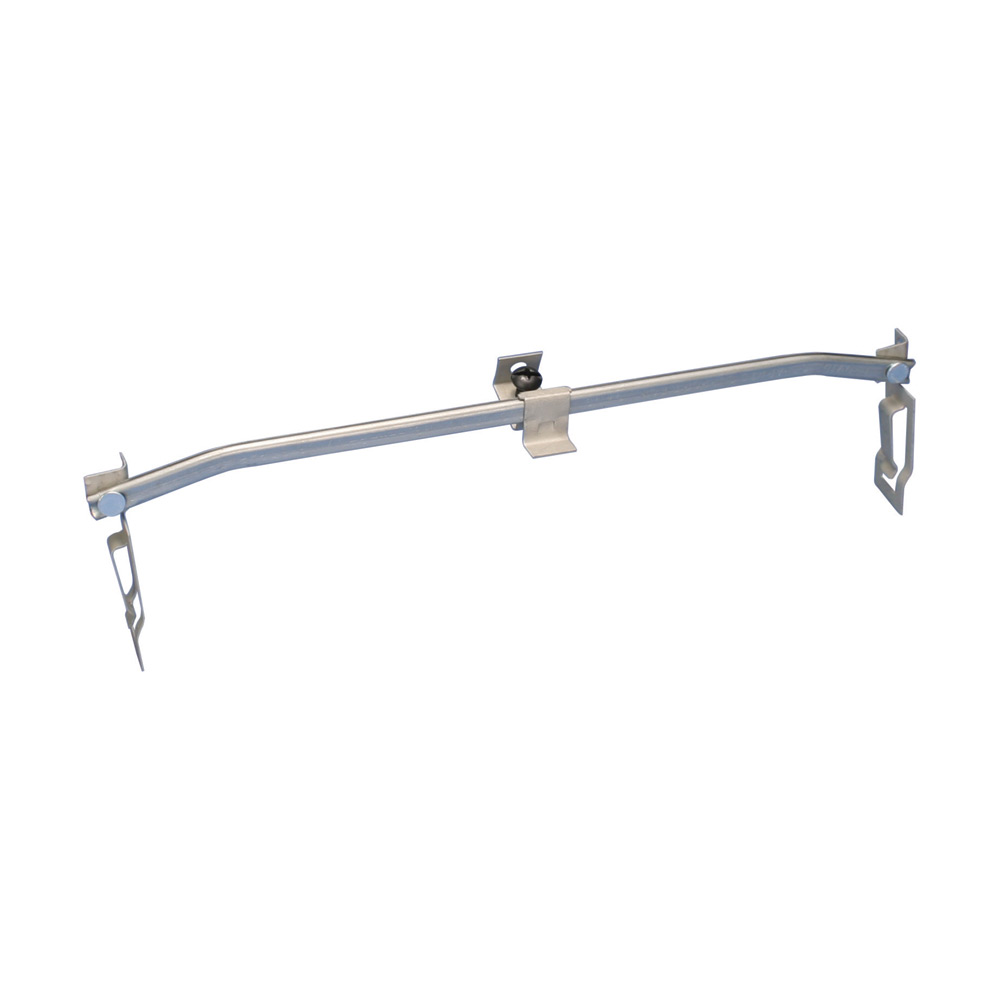SidecarBob
Retired & too busy to go back to work
I am finishing a 6'3" x6'8" basement bathroom which will have a dropped ceiling (24x24" PVC panels) because about 80% of it is covered by ducts and I wont to retain access to wiring, TV & internet cables &c that run through that space. The light will be a surface mount LED fixture.
I have hung the track for the ceiling at the same height as the door opening, which only leaves a bit over 2" between the face of the tile and the cold air duct in the centre of the room where I would prefer to mount the light (this is also in the middle of a tile). As I understand it there has to be a box above the light and it cannot be supported by the ceiling tile so the box is normally tethered to a joist above with a cable or chain but there isn't room to do that in this case.
I would like to make a bracket from .5" or .75" steel strip that would hang just below the duct and attach to the joist on either side of the duct, then bolt a 1.5" deep octagon box onto he bracket so that it is flush with the surface of the tile and mount the light to the box as I would in any other finished ceiling.
The only problem I can think of with that is that getting the tile into place might be a bit fiddly and it wouldn't be easy to remove it later but that shouldn't be an issue if the tiles surrounding it can be removed.
What do you think?
I have hung the track for the ceiling at the same height as the door opening, which only leaves a bit over 2" between the face of the tile and the cold air duct in the centre of the room where I would prefer to mount the light (this is also in the middle of a tile). As I understand it there has to be a box above the light and it cannot be supported by the ceiling tile so the box is normally tethered to a joist above with a cable or chain but there isn't room to do that in this case.
I would like to make a bracket from .5" or .75" steel strip that would hang just below the duct and attach to the joist on either side of the duct, then bolt a 1.5" deep octagon box onto he bracket so that it is flush with the surface of the tile and mount the light to the box as I would in any other finished ceiling.
The only problem I can think of with that is that getting the tile into place might be a bit fiddly and it wouldn't be easy to remove it later but that shouldn't be an issue if the tiles surrounding it can be removed.
What do you think?










